The secret of a successful sandcastle could aid the revival of an ancient eco-friendly building technique, according to research led by Durham University. Researchers, led by experts at Durham’s School of Engineering, have carried out a study into the strength of rammed earth, which is growing in popularity as a sustainable building method.
Earth Architecture on the Front Range of Colorado
Front Range Earth Architecture: Why and Why Not?, written by Michael Shernick, is a paper that looks at the history and viability of earth architecture on Colorado’s Front Range. Click here to download the paper in PDF format.
Andy Goldsworthy on Alderney Island
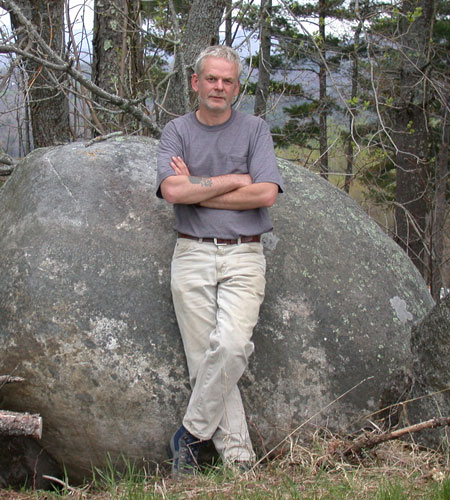
Photo: Jacob Ehrenberg, Copyright © 2009 National Gallery of Art, Washington D.C.
British artist, Andy Goldsworthy, is planning to produce a work using 4 to 5ft (1.2 to 1.5m) “stones” made from objects embedded in rammed earth. The stones will eventually disintegrate to reveal whatever material he decides to leave inside each one. Each stone will be made with earth containing materials and objects. These will be incorporated into each stone as it is being constructed and might be rocks, branches, bones, tools, seeds, clothes, beach debris or anything else.
The project is reminiscent of Smiljan Radic’s Casa del Carbonero. This is not Goldsworthy’s first foray into earth art. His project, Clay Wall, is a large clay plastered wall that uses human hair from his home village as a binder.
Renovations and Repairs at Church of the Holy Cross
Church of the Holy Cross
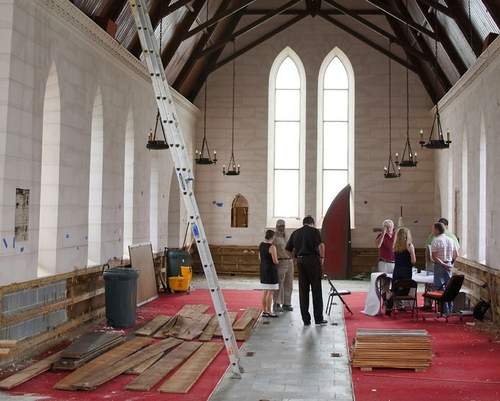
Interior
After years of waiting, the historic rammed earth Episcopal Church of the Holy Cross in Stateburg is ready to begin renovations. The church, built between 1850 and 1852, was declared a national landmark in 1978. The building is of particular historic significance because of its “unusual construction of rammed earth known as pise de terre.”
Kashgar: The End of a Mud Brick City
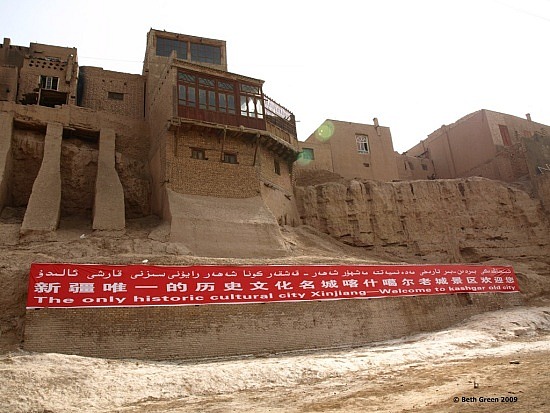
An old way of life is coming to a crashing end in north-western China with two-thirds of Kashgar’s Old City being bulldozed over the past few weeks under a government plan to “modernise” the area. Nine hundred families already have been moved from Kashgar’s Old City, “the best-preserved example of a traditional Islamic city to be found anywhere in central Asia,” as the architect and historian George Michell wrote in the 2008 book “Kashgar: Oasis City on China’s Old Silk Road.” Over the next few years, city officials say, they will demolish at least 85 percent of this warren of picturesque, if run-down homes and shops. Many of its 13,000 families, Muslims from a Turkic ethnic group called the Uighurs (pronounced WEE-gurs), will be moved.
Mud Architecture: Pakistan
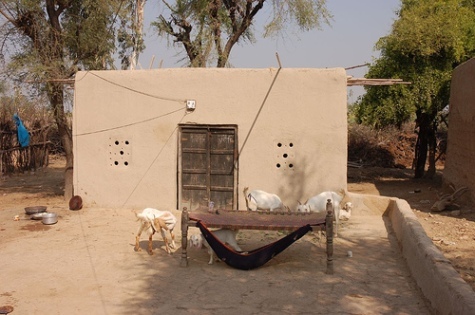
Architecture: Using Mud to Build Homes, written by S.A.J. Shirazi, is a short essay proclaiming “the future lies in mud architecture”, particularly in the authors home country of Pakistan.
Israel Siege on Gaza Leads to Mud Brick House
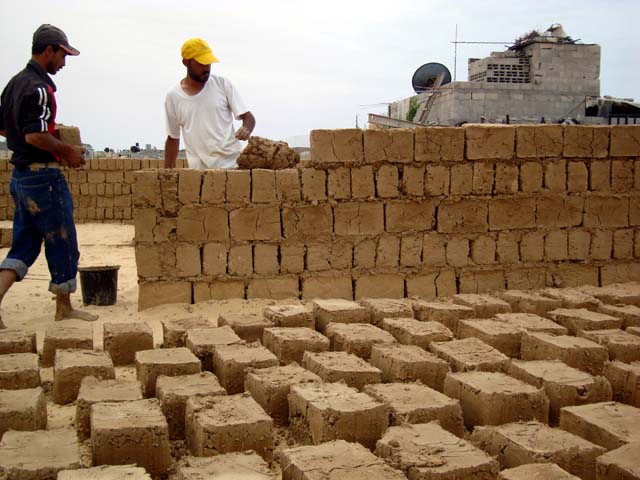
Building earthen structures like bread ovens and small animal pens is a technique many Palestinians are familiar with, but extending the method to houses isn’t a notion that has taken hold in Gaza. But Jihad el-Shaar, who lived with his wife and four daughters with extended family wanted to build a home of their own. After waiting for two years, it was apparent that the siege would make cement unavailable so he decided to build his house of mud.
The Adobe Alliance Featured in Mother Earth News
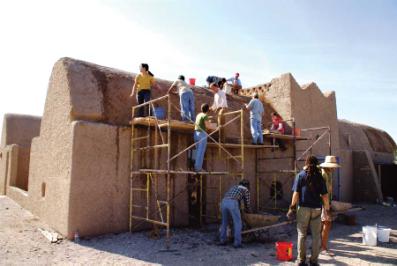
Photo by Yasmina Rossi.
“The allure of elegant earthen architecture can be life-changing. At least that was the case for urbane New Yorker Simone Swan, who in the 1970s became fascinated with the ideas and designs of renowned Egyptian architect Hassan Fathy. Then the 40-something executive head of the Houston-based Menil Foundation, Swan moved to Cairo to study with Fathy. She became his most passionate advocate, and transplanted his adobe building techniques to the Southwestern United States.”
Jahili Fort in Al Ain Abu Dhabi
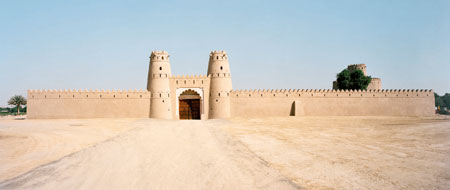
Historically, the daily life of the inhabitants of Al Ain, today the second largest city in the Emirate of Abu Dhabi, took place in the palm gardens of the oasis and the surrounding settlements and markets. To protect the oases, watchtowers and forts were erected. The Jahili Fort located in the modern-day centre of the city is the largest of Al Ain’s forts. Built in the 19th century by Sheikh Zayed the First, it can be seen from the Al Ain oasis to the west of the city. With its distinct three-tiered profile, the fort is now a national monument, pictured on the 50 Dirham note and often used as a logo or model for new architecture. The old fort was erected at the end of the 19th century.
The fort was recently restored by Roswag & Jankowski Architekten, Berlin.
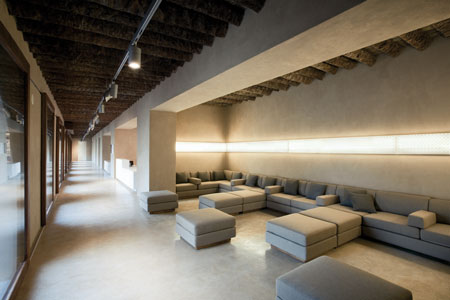
The interior surfaces remain true to the historical appearance. The ceiling consists of palm rafters and palm leaves. A local clay plaster has been used for the interior wall surfaces. In the exhibition areas a grey coloured fine clay finishing plaster made by Claytec was used to create a neutral background for the exhibition spaces. The floors likewise follow historical precedence and are made of rammed earth stabilised with a wax to cope with greater wear and tear.
All new insertions such as doors and furniture, made of corian or wood composite, are coloured white differentiating them from the surrounding building. The external render of the existing walls was examined and repaired where necessary. Previous renovation works had employed a non-traditional plaster with added gypsum for the crenelations. This plaster is too rigid and already exhibited defects; it was replaced with a clay plaster. The building was then given an overall finishing coat of clay plaster. The earth plaster is maintained at regular intervals as is traditional with this historical material. When used as an external render, clay plaster should be regarded as a weathering surface that needs ongoing maintenance, typically every two years, sometimes after sustained periods of heavy rain. Sandstorms are also a cause of erosion.
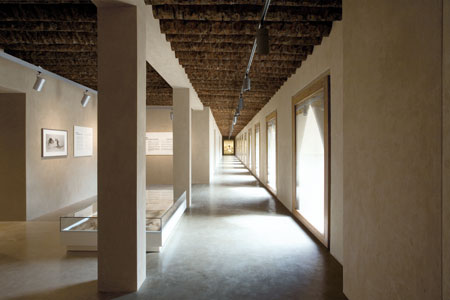
Most of the spaces will house a permanent exhibition “Mubarak bin London: Wilfried Thesiger and the Freedom of the Desert” showing photographs taken in the 1940s by the researcher and explorer Wilfried Thesiger who in the 1940s crossed the deserts of the Arabian peninsula repeatedly travelling with Bedouins and documenting what he saw with a Leica camera.
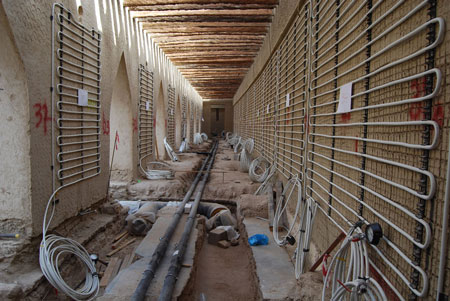
The 90 cm thick external earth walls offer excellent thermal insulation. The additional insulation on the roof improves still further the indoor room temperature and together with the solar protection windows on the façade provide effective protection against the extreme heat outdoors. The building is kept at a constant 24°C using a water-based cooling system integrated into the plaster layer of the walls. This minimizes the need for additional air cooling so that only fresh air is required. The cool indoor temperature of the walls and the reduced need for cold air makes the indoor climate more comfortable and reduces the energy consumption. An actual room temperature of 24°C equates to a felt room temperature of 22°C. The plant and technical installations for the entire fort are located below ground in the buffer zone.
The construction is made of traditionally available building materials including earth, palm products and to a lesser degree also timber. The quartered palm trunks can span a room of about 2.70 m and dictate the strongly partitioned structure of the historic buildings. The walls consist of air-dried earth blocks which can be built directly on the sandy ground without the need for foundations. A matting made of palm fronds covered with earth is laid on rafters made of split and quartered palm trunks arranged at an incline. The small amount of timber available was used for the door and window frames.
AZURE reviews Earth Architecture
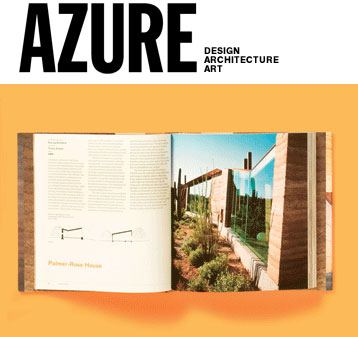
The May, 2009 issue of AZURE Magazine reviews Earth Architecture.
EARTH ARCHITECTURE
“Our planet’s oldest building traditions continue to inspire and shelter us despite the complexities of the modern age,” writes Ronald Rael, author of this compact but mighty book of more than 40 contemporary buildings crafted from the most common building material in the world: the ground beneath our feet.
An architect and academic, Rael explores the relationship between industrial and non-industrial modes of production, so it is apt that this book simultaneously discusses the past and present. Carefully selected examples from recent decades share a primal quality, despite being of their time. The Nk’Mip Desert Interpretive Centre in Canada, by Hotson Bakker Boniface Haden, and the Chapel of Reconciliation in Germany, by Reitermann and Sassenroth both serve as powerful examples of how earth constructions can create a literal and material connection to the landscape, whether at the base of a mountain in the desert, or out of the ruins of a church.
The featured projects range from resorts in the highland villages of Bhutan to houses in the Arizona desert. Rael connects them through a rich historical and vernacular discussion about mud bricks, compressed earth blocks, and rammed and moulded earth. Ecological sustainability is one benefit of building with earth, but Rael also discusses cultural sustainability, as developing countries with strong earth-building traditions forgo domestic construction knowledge in favour of the growing use of concrete blocks and the Western ideals of “advancement” they represent. One exception is the Aga-Khan Award–winning Handmade School designed by Austrian-German architects Heringer-Roswag, where the structure improves on the durability of Bangledeshi cob culture. Throughout, Earth Architecture compellingly underscores the need for us to rethink how we can build sustainably by using old techniques in new ways.–Nova Tayona
Read the review at: www.azuremagazine.com/magazine/bookreviews.php
